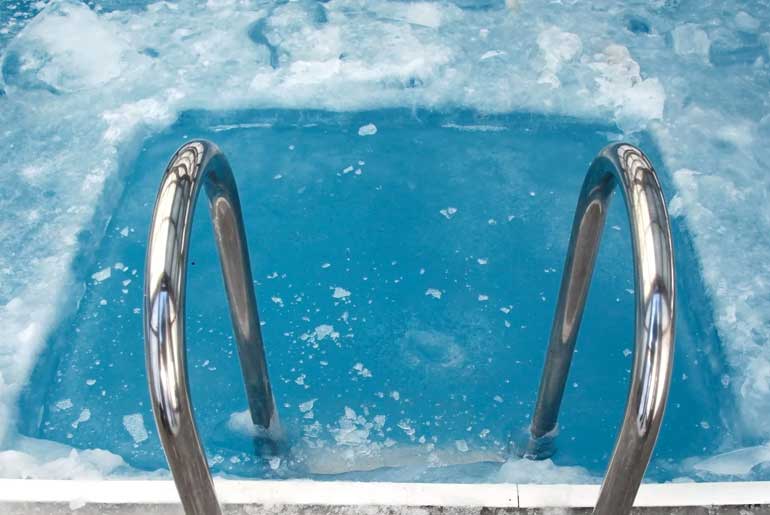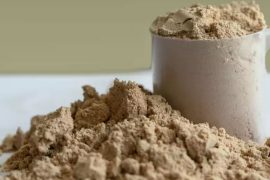Ice baths involve immersing the body in cold water, typically at temperatures between 10-15°C, for a short duration, usually around 10-15 minutes. This practice is commonly used by athletes and fitness enthusiasts to speed up muscle recovery, reduce inflammation, and alleviate soreness after intense physical activity. The cold temperature causes blood vessels to constrict, which helps reduce swelling and flush out metabolic waste from muscles. Once out of the ice bath, the rewarming process promotes better blood circulation, aiding in overall recovery.
Benefits of ice baths:
1. Enhanced Muscle Recovery: Ice baths are widely known for their ability to speed up muscle recovery after intense physical activity. By reducing muscle soreness and inflammation, they help athletes and fitness enthusiasts recover more quickly, allowing them to return to training sooner. The cold constricts blood vessels, which reduces swelling, and as the body warms up, it flushes out metabolic waste from muscles.
2. Reduced Pain and Inflammation: Cold exposure from ice baths can reduce pain and discomfort by limiting the body’s inflammatory response. This is particularly helpful for athletes dealing with muscle strain, joint pain, or injuries. The cold helps numb sore areas, offering temporary relief from pain and reducing the risk of chronic inflammation over time.
3. Improved Mental Health and Stress Relief: Ice baths can have a significant positive impact on mental health by stimulating the release of endorphins, the body’s natural “feel-good” hormones. Regular cold exposure is believed to reduce symptoms of anxiety and depression, as it challenges the body to adapt to stress. Additionally, the deliberate practice of controlled breathing during ice baths promotes relaxation and mindfulness, reducing overall stress levels.
4. Boosted Immunity: According to experts, regular ice baths may enhance immune function. Cold exposure has been shown to increase the production of white blood cells, which are crucial in defending the body against infections and diseases. This boost in immune response can help the body become more resilient to illnesses.
5. Increased Alertness and Energy Levels: Ice baths stimulate the sympathetic nervous system, which leads to an increase in alertness, energy, and mental clarity. Cold exposure triggers the release of adrenaline and other neurotransmitters, which heighten focus and combat fatigue. This makes ice baths especially beneficial during the summer months when heat can cause lethargy.
6. Improved Sleep Quality: By lowering the body’s core temperature, ice baths create a cooling effect that signals the body to prepare for sleep. This can help people fall asleep faster and enjoy deeper, more restful sleep. The body naturally cools down before bedtime as part of the sleep cycle, so an ice bath enhances this process, promoting better sleep patterns.
7. Emergency Cooling for Heat Stroke: Ice baths are also an effective treatment for cooling the body in cases of heat stroke or extreme overheating. Immersing the body in cold water rapidly lowers the core temperature, preventing further heat-related damage and promoting recovery from heat-induced conditions.
In summary, ice baths offer a comprehensive range of benefits, from aiding muscle recovery and reducing inflammation to improving mental health, boosting immunity, enhancing energy levels, improving sleep, and providing emergency relief from heat-related conditions.
Risks of ice baths:
Ice baths can be beneficial for recovery, but they do come with potential risks, especially if not done properly. The cold temperature can cause a shock to the system, potentially leading to hypothermia or frostbite if the exposure is too long or the water is too cold. Additionally, ice bath can increase blood pressure, which may pose a risk for people with cardiovascular conditions. Rapid cooling can also cause muscle stiffness or impair flexibility if not followed by proper warm-up. People with certain medical conditions, such as Raynaud’s disease, nerve damage, or circulatory issues, should avoid ice bath. It’s important to limit the duration to 10-15 minutes and consult with a healthcare provider if unsure about the safety.
Disclaimer:
The information contained in this article is for educational and informational purposes only and is not intended as a health advice. We would ask you to consult a qualified professional or medical expert to gain additional knowledge before you choose to consume any product or perform any exercise.







